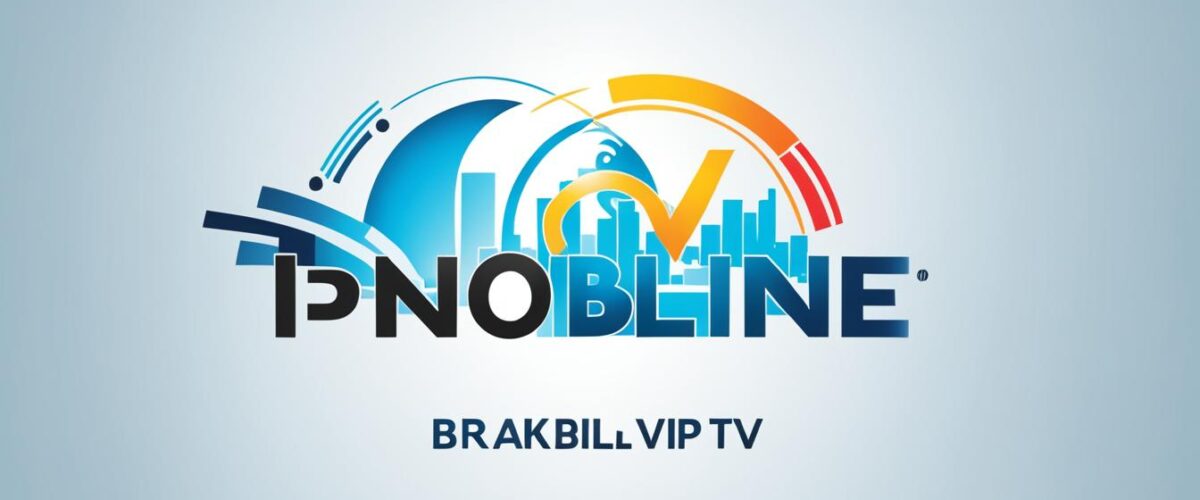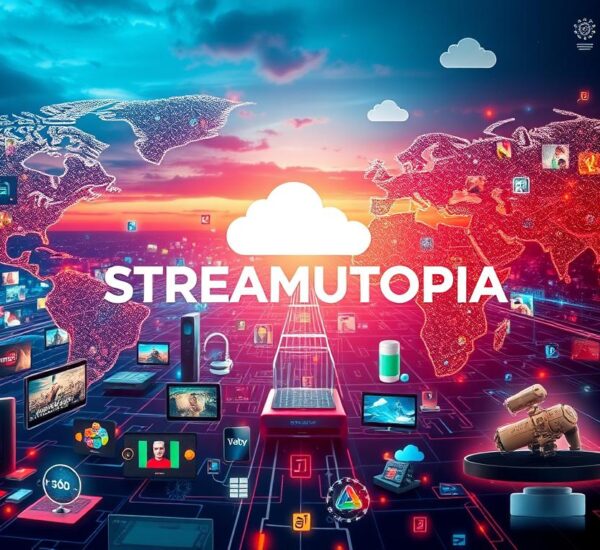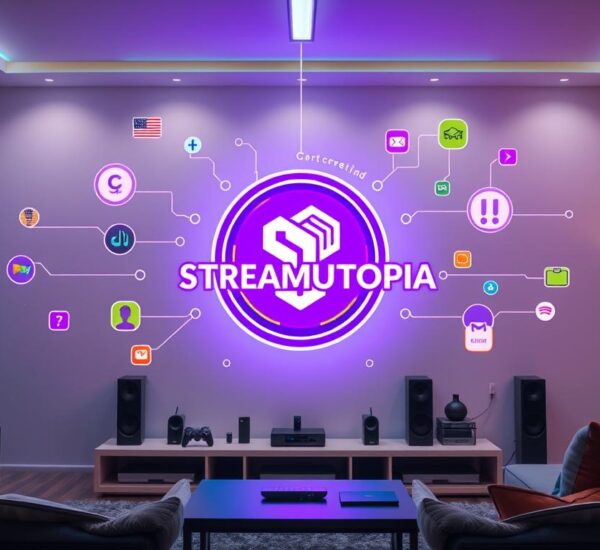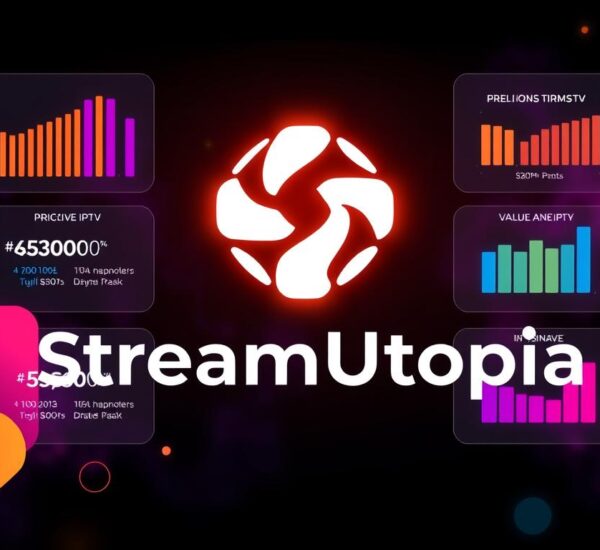The global IPTV market hit USD 71.5 billion in 2022. Its growth isn’t slowing down. TechSci Research says it will increase by 15.7% yearly through 2028. IPTV is changing how we watch TV, making a big impact.
IPTV started taking off in the early 1990s. This happened because tech improved and internet became widely available. It lets people interact with TV, watch what they want when they want, and use it on different devices. It’s no wonder many are ditching cable and satellite for IPTV. It’s cheaper, more flexible, and has a lot more to watch.
Having fast internet is key for IPTV. More people want to watch on their own schedule these days. IPTV uses fast internet to give you smooth streaming. Also, cloud IPTV is becoming popular because it’s easy to upgrade, flexible, and saves money. This makes it good for both viewers and companies that provide TV services.
The coming of 5G will make IPTV even better. It will let you stream shows smoother, with less waiting, and work better overall.
But IPTV has its own set of problems too. Things like piracy, different rules in each place, and a lot of competition from other streaming services are big challenges for those who make and watch TV this way.
Key Takeaways
- IPTV market reached USD 71.5 billion in 2022 and is projected to grow at a CAGR of 15.7% from 2024 to 2028.
- Advancements in technology and the availability of broadband internet have fueled the growth of IPTV.
- Many consumers are switching from traditional TV services to IPTV due to lower costs, flexibility, and a wider range of content options.
- Cloud-based IPTV services offer scalability, flexibility, and cost-efficiency.
- The rollout of 5G networks is expected to enhance IPTV capabilities in the future.
The Definition and Operation of IPTV
Television has changed a lot thanks to IPTV. But what is IPTV, and how does it work?
IPTV stands for Internet Protocol Television. It sends TV content over the internet. Unlike traditional TV, it uses the internet to send videos to people.
So, how does IPTV really work? It mixes different technologies to send content smoothly. First, it makes TV content smaller. This helps send it over the internet without losing quality.
Then, middleware steps in. This software links video formats and devices. It makes sure everything runs smoothly. With middleware, people can easily watch the IPTV shows they like.
Viewers need a set-top box (STB) for IPTV. This box connects their TV to the internet. It decodes the videos and shows them on the screen.
Many companies offer IPTV, like phone companies and internet providers. In the USA, major brands include AT&T, Verizon, Hulu, YouTube TV, and Sling TV.
Advantages of IPTV
IPTV has a lot of benefits over regular TV. Let’s look at some of them:
- Interactive Features: IPTV leads to interactive features like on-demand videos. It also offers TV guides and tips tailored to what you like to watch.
- On-Demand Content: Viewers can find a huge selection of shows and movies. This means you can watch whatever you like whenever you want.
- Multi-Device Accessibility: You can watch IPTV on your phone, tablet, or computer. The shows you love are always with you, no matter where you are.
- Customization: With IPTV, you can make your own playlists and choose your favorite channels. You get to watch what you like the most.
These features make IPTV a great way to get entertainment. It changes the way we watch TV for the better.
Advantages of IPTV Over Traditional TV
IPTV is becoming a top choice for viewers because it comes with many benefits not found in traditional TV. Let’s take a closer look at some key advantages.
1. Enhanced Interactivity
Compared to traditional TV, IPTV offers much better interactivity. You can join live polls, vote for your favorite shows, and interact with content instantly. This makes watching TV more fun and gets you involved in the shows like never before.
2. On-Demand Features
With IPTV, you get to watch shows, movies, and documentaries whenever you like. You’re not stuck to TV schedules anymore. This gives you the freedom to watch what you want at your own pace.
3. Multi-Device Accessibility
IPTV shines in the way it works on many devices. You can watch your shows on smartphones, tablets, laptops, or even regular TVs. This means you can catch up on your favorite content anywhere you are.
4. Customization and Personalization
IPTV lets you customize your viewing experience. You can make personal watchlists, set reminders for shows, and get suggestions that match your tastes. This makes the whole experience more tailored and fun.
5. Integration with IP-Based Services
IPTV easily works with other digital services. It brings video-on-demand, online gaming, and connects with social media features together in one place. This combo offers a rich and seamless digital experience.
It’s clear why IPTV is making waves. With its many advantages like interactivity, on-demand shows, being able to watch across devices, and customization, it’s changing TV for the better. The way we enjoy television is evolving.
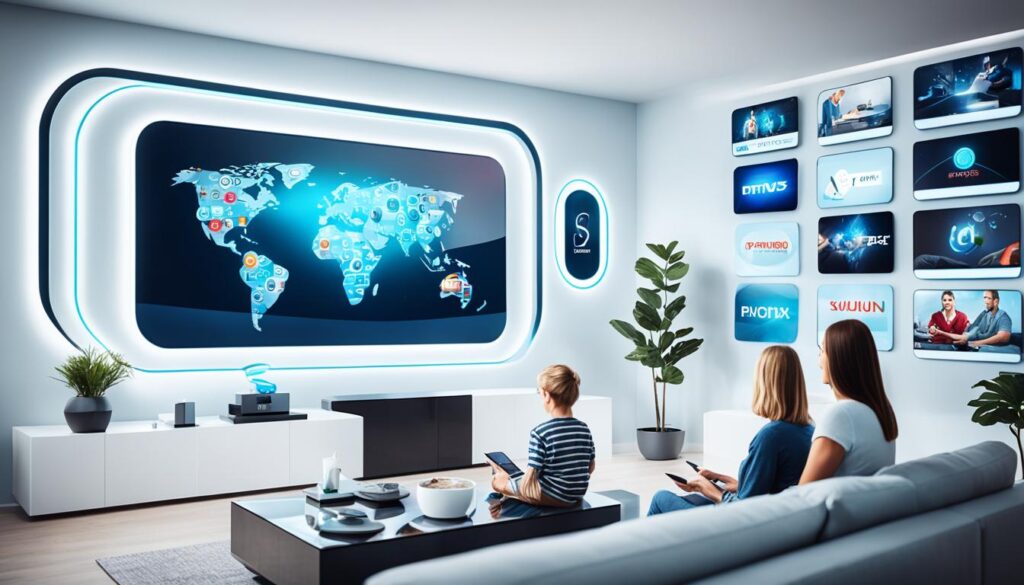
| Advantages of IPTV | Description |
|---|---|
| Enhanced Interactivity | IPTV allows users to actively participate in the content they are watching through live polls, voting, and real-time interaction. |
| On-Demand Features | IPTV provides users with the flexibility to watch their favorite shows and movies whenever they want, eliminating the need to adhere to fixed broadcasting schedules. |
| Multi-Device Accessibility | Users can access IPTV services on a variety of devices, including smartphones, tablets, laptops, and traditional TVs, enabling them to watch content anytime, anywhere. |
| Customization and Personalization | IPTV offers users the ability to personalize their viewing experience, create playlists, set reminders, and receive recommendations based on their preferences. |
| Integration with IP-Based Services | IPTV seamlessly integrates with other IP-based services, such as video-on-demand platforms, online gaming, and social media, providing users with a comprehensive digital experience. |
Driving Factors and Market Trends in IPTV
The IPTV industry is changing fast due to a mix of reasons. Customer needs, tech growth, market competition, and rules all play a big part. These push the industry forward and make it better.
Consumer Demand for Flexibility and Personalized Viewing Experiences
People want more control over what they watch. They like having the freedom to enjoy shows, movies, and live events when it suits them. IPTV lets viewers pick what they watch and when, breaking free from old broadcast timings.
This is possible because of on-demand videos and catch-up TV. Such features give people the power to shape their entertainment time.
Technological Advancements Driving IPTV Adoption
New tech keeps making IPTV better. Things like ultra-high definition video, cloud storage for shows, and interactive options enhance the viewing experience. These cool features draw more people to IPTV and keep them hooked.
Competitive Pressures and Industry Consolidation
The IPTV market is full of competition from IPTV and OTT services. This makes traditional cable and satellite providers up their game. They’re updating their content to keep users hooked. Also, they’re joining forces and offering more services to stand out in the crowd.
Regulatory Environment Impacting IPTV Content Distribution
Rules also shape how IPTV works and what it offers. Things like net neutrality and copyright laws affect the industry. Adhering to these rules helps IPTV businesses work legally and in ways that help their viewers. However, these rules keep changing, posing both challenges and chances for IPTV.
In summary, IPTV is growing because people love to personalize their viewing. This growth is also thanks to new tech, intense competition, and changing rules. Together, these factors are reshaping TV entertainment.
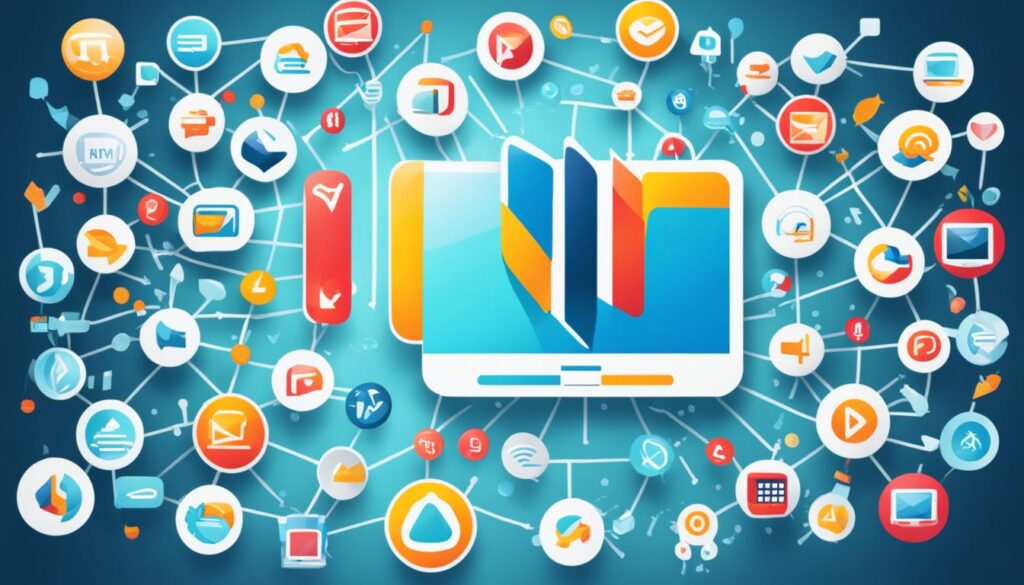
Impact on Consumer Behavior and Industry Dynamics
IPTV has changed the way we watch TV and upset how TV was made. A big change is that many people are cutting their cords. They’re dropping cable or satellite TV for IPTV and over-the-top options.
IPTV lets you binge-watch. You can now watch lots of episodes back-to-back. This freedom has changed what people want from their TV time.
Also, with IPTV, you can watch shows when it suits you. You’re not stuck to a strict schedule anymore. This has really changed how people enjoy TV programs.
Plus, you can watch your shows on more than just a regular TV. You can use smartphones, tablets, or laptops too. This has freed us from watching TV only in one place.
The change with IPTV has reached beyond just what we do as consumers. It also affects how TV companies make money. This new way to access TV is making them rethink how they do business.
But, IPTV is not all bad news for the TV industry. It also offers new chances for creators. They can now share their work with more people and in new, interactive ways. This is changing how stories are told and how we get to them.
The Impact of IPTV on Consumer Behavior
IPTV has led to cord-cutting. People are leaving their old TV ways for new ones. This change shows we want more control over what and how we watch.
The Disruption of Traditional Models
IPTV is shaking up TV’s old ways. It’s causing big changes in how TV is paid for, advertised, and shared.
Opportunities for Content Creators
For creators, IPTV is a chance to do new things. They can now reach more people and in exciting, interactive ways. This is a whole new world for making and sharing stories.
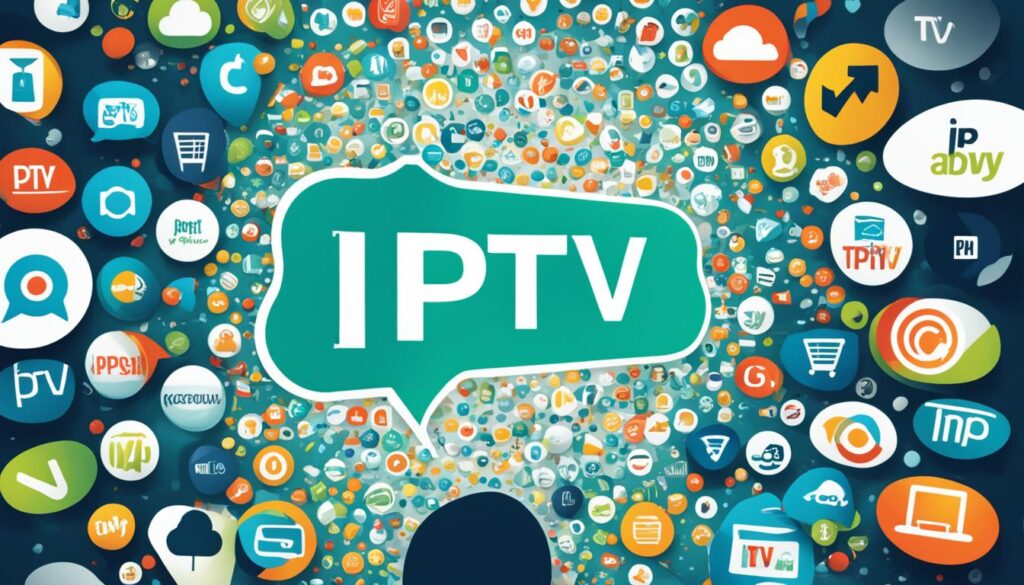
Future Outlook and Challenges for IPTV
IPTV is growing fast, with a bright future ahead. This growth is because of new technology, better internet, and what people like. As tech gets better, IPTV can give users more cool stuff and better services. Fast internet means watching videos smoothly, which attracts more people to IPTV.
But, IPTV also faces some big challenges. Rules about the internet and privacy might change. These changes could affect how much IPTV costs or what shows it offers. Providers will have to adjust to these changes quickly.
Another big issue for IPTV is there’s too many places to watch shows. People have lots of choices for where to get their content. This can mean paying for several services to get all the stuff they want to watch. IPTV providers need to find a way to offer everything in one place.
Soon, IPTV will mix with other types of TV services, like regular broadcasts and online videos. This mix can be good and bad. It’s cool because it brings together different ways to watch TV. But it’s tricky to make sure everything works together smoothly.
The Future of IPTV: A Table of Insights
| Challenges | Opportunities |
|---|---|
| Regulatory uncertainties | Technological innovation |
| Content fragmentation | Expanding broadband infrastructure |
| Evolving consumer preferences |
The table above shows that IPTV has big challenges but also great chances to grow. Even though there are difficulties, the chance to use new tech and meet what people want is there. By tackling the challenges and using the chances, IPTV can keep up with what customers want.

Understanding IPTV: The Future of Television Streaming
IPTV is changing how we watch TV, and it’s here to stay. Its use of technology and features not found in traditional TV are reshaping the way we experience television.
Technical Underpinnings of IPTV
IPTV works through a combination of technologies. It includes video streaming, compression, and networks. This mix makes watching videos online smooth and without pauses.
Instead of waiting for show times, IPTV lets you jump to any channel at any time. This freedom is all thanks to the way IPTV uses the internet to deliver content.
Advantages over Traditional TV
IPTV has several benefits that old TV can’t match. One big plus point is how you can actively be part of the show. This could be by voting in real-time or getting recommendations tailored just for you.
You can also set up your watch list as you like. Pick what, when, and how to watch. This power to choose puts you in control of your entertainment.
Watching IPTV isn’t limited to just the living room TV. You can see your favorite programs on your phone, tablet, or computer too. As long as you’re connected to the internet, your shows are with you.
Moreover, IPTV blends well with web browsing and social media. It makes for a more connected and interactive viewing experience. This kind of integration adds more to your digital life.
In sum, IPTV stands out as the future of how we enjoy TV. It’s exciting for many reasons, like better ways to interact with shows and total choice over what you watch. Plus, you can watch from different devices anywhere.
Understanding IPTV: How It Works
IPTV stands for Internet Protocol Television. It brings TV shows to you over IP networks. This means you can watch live TV, find shows to watch anytime, and use interactive services. IPTV uses different technologies that all work together smoothly so you can enjoy your shows.
The Technology Stack
The tech stack in IPTV has several parts that come together to show you high-quality content. These parts include:
- Content Delivery: Efficient content delivery is key for IPTV to stream without a glitch. They use special tech to send video over IP networks. This way, you can watch your shows without any pause.
- Digital Compression: IPTV uses digital compression to save on bandwidth. This tech makes video files smaller without losing quality. It helps with sending and storing videos more easily.
- IP Multicasting: IP multicasting helps share content with many people at once in IPTV. It means lots of viewers can watch without slowing down the network. This makes sure everyone has a great viewing experience.
- Middleware: Middleware is vital in IPTV systems. It links digital video formats and your devices. It helps manage show guides, set up on-demand watching, and keep everything running smoothly for you.
Service Providers
Many types of companies offer IPTV, from phone and internet services to OTT providers. These folks make sure you can watch a lot of channels, catch up on shows, and use cool services.
Companies like AT&T or Verizon have their platforms. Then there are OTT providers like Hulu + Live TV and YouTube TV. They let you stream shows on all kinds of devices.
The Role of Middleware
Middleware is super important for IPTV. It connects those making content with those watching. This tech helps make sure your viewing is smooth. It also takes care of how the system runs and helps with guides and on-demand shows.
So, middleware is essential for IPTV services to reach you without a hassle and work well.
Conclusion
IPTV has changed how we watch TV, giving us more choices and ways to watch. Thanks to new tech and easy access to fast internet, IPTV is now a big player in the TV scene. It’s growing fast, driven by better tech, what viewers want, and talks on rules.
People want TV specifically made for them and to watch when they want. IPTV companies have to keep up and bring new things to the table. The TV world is changing quickly. Everyone in the IPTV world is working hard to deal with different rules and keep IPTV strong.
The future for IPTV looks very bright. When 5G is fully rolled out, watching TV through IPTV will be even better. This means watching won’t be glitchy, and you can switch between devices easily. IPTV is also joining forces with services like OTT streaming and old TV ways. This brings new chances for making shows that people really like and can join in on.
Keeping up with what viewers want will keep IPTV at the top. It’s ready to change the way we watch TV and make the whole TV world different. By always being ahead and looking out for what people need, IPTV can be the future of how we watch TV’s best stories.
FAQ
What is IPTV?
Who provides IPTV services?
What are the advantages of IPTV over traditional TV?
What are the driving factors and market trends in IPTV?
How does IPTV impact consumer behavior and industry dynamics?
What is the future outlook and challenges for IPTV?
How does IPTV work?
